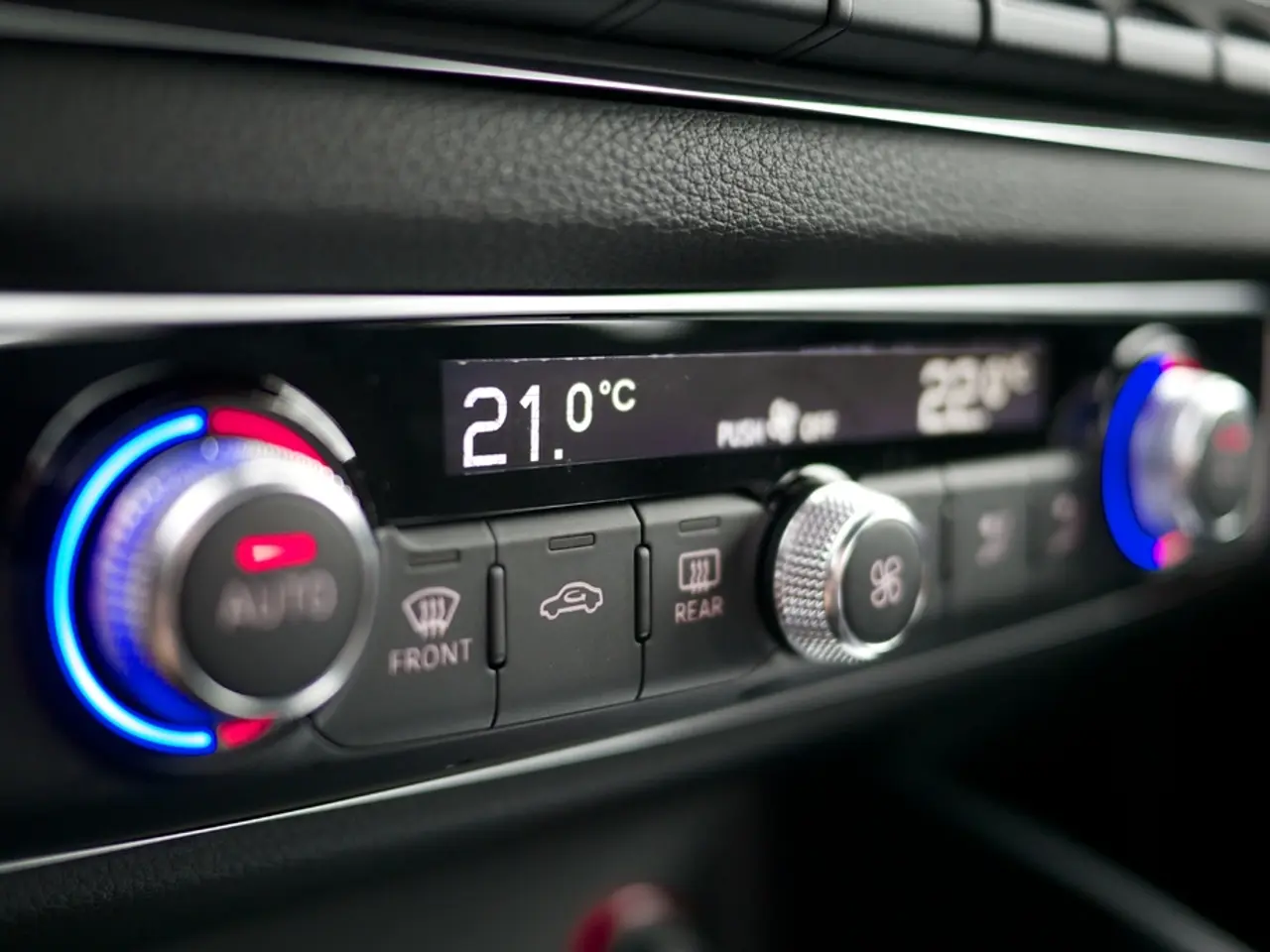Australia's Longest-Reaching Electric Vehicles
In the rapidly evolving world of electric vehicles (EVs), one question that often arises is how far these vehicles can truly travel on a single charge. While manufacturers provide claimed ranges, real-world driving conditions can significantly impact EV range. Here's a breakdown of the key factors that influence an EV's driving range.
Firstly, driving speed plays a crucial role. Higher speeds increase aerodynamic drag, which can decrease range by up to 39% in some EVs, as speeds grow exponentially with aerodynamic resistance [2][3][5]. For instance, increasing speed from 50 mph to 80 mph can significantly reduce range.
Temperature and weather conditions also impact EV range. Cold weather can reduce range by 20-30% because batteries operate less efficiently and additional power is used for cabin heating. Hot weather, particularly due to air conditioning use, also impacts range, but its effect is generally less than that of speed, especially during high-speed driving [1][2][3][5].
Driving habits and style are equally important. Aggressive acceleration and frequent rapid charging can negatively affect battery efficiency and reduce range. On the other hand, smooth, steady driving conserves energy and maximizes range [1].
Driving conditions and topography also play a role. Urban driving often improves range compared to highway driving because regenerative braking recovers energy during frequent stops, while driving at sustained high speeds on motorways reduces range. Hilly or mountainous terrain can also affect range due to variable power demand [1][5].
Battery condition and age are additional factors. Used EVs may see some battery degradation over time, which slightly reduces driving range [1][4].
Traffic conditions can both positively and negatively impact range depending on regenerative braking efficiency and idling times [5].
It's worth noting that speed and temperature are among the most significant factors, with speed (due to aerodynamic drag) often having a stronger impact than temperature, especially during high-speed driving. Driving habits and environmental conditions further modulate real-world range compared to manufacturer estimates [1][2][3][5].
To determine how much range you need, tools like Google Maps multi-stop route planner, A Better Route Planner, or Tesla's Trip Planner can be useful. Emerging lithium-iron-phosphate (LFP) batteries are less susceptible to degradation when full charging, but an 80% cap is still suggested when at public stations to avoid prolonged charging wait times [6].
Newly-released EV models are improving driving range capabilities due to advancements in battery technology, electric drive units, and aerodynamic efficiency. For example, the facelifted 2024 Polestar 2 liftback extended its claimed WLTP range by between 54 to 104 kilometres [7].
However, it's essential to remember that real-world EV range is less than WLTP claims due to factors such as driving behavior, charging practices, and weather conditions. WLTP claims do not accurately reflect real-world driving range since they are conducted under controlled laboratory conditions [8].
Some of the tests quoted by manufacturers for electric driving range include the New European Driving Cycle (NEDC), the China Light-Duty Vehicle Test Cycle (CLTC), and the United States Environmental Protection Agency (EPA) test [9]. It's recommended to charge lithium-ion type batteries up to 80% only to maintain good battery health [10].
In conclusion, understanding the factors that influence electric vehicle driving range can help you make informed decisions when choosing an EV. By considering these factors, you can ensure that the vehicle you choose meets your daily commuting needs and offers the range you require for longer trips.
[1] https://www.researchgate.net/publication/339606041_Real-World_Electric_Vehicle_Range_Prediction_Based_on_Driving_Behavior_and_Environmental_Factors [2] https://www.sciencedirect.com/science/article/abs/pii/S259004442030117X [3] https://www.sciencedirect.com/science/article/abs/pii/S2590044421000936 [4] https://www.sciencedirect.com/science/article/abs/pii/S2590044421000948 [5] https://www.researchgate.net/publication/349828240_Real-World_Electric_Vehicle_Range_Prediction_Using_Machine_Learning_and_Statistical_Models [6] https://www.researchgate.net/publication/344553737_The_impact_of_charging_strategy_on_the_lifetime_of_lithium-ion_batteries_in_electric_vehicles [7] https://www.polestar.com/us/en/news/2023/polestar-2-facelift-range-improvement [8] https://www.researchgate.net/publication/347511688_Real-World_Electric_Vehicle_Range_Prediction_Using_Machine_Learning_and_Statistical_Models [9] https://www.researchgate.net/publication/327744253_Comparison_of_the_European_New_Driving_Cycle_NEDC_and_the_World_Harmonised_Light_Vehicle_Test_WLTP_for_Electric_Vehicles [10] https://www.researchgate.net/publication/344553737_The_impact_of_charging_strategy_on_the_lifetime_of_lithium-ion_batteries_in_electric_vehicles
- The 'technology' applied in electric vehicles (EVs) significantly influences their driving range, especially advancements in battery technology, electric drive units, and aerodynamic efficiency.
- In the 'industry' of EVs, battery condition and age are important factors that can slightly reduce driving range, particularly in used vehicles over time.
- 'Finance' and 'lifestyle' considerations play a role in EV ownership, and tools like Google Maps multi-stop route planner can help determine how much range a vehicle needs to meet daily commuting needs and longer trips.
- 'Transportation' choices, such as the adoption of electric-vehicles (EVs) or regular cars, can impact the 'environment' by reducing carbon emissions, but real-world EV range is less than WLTP claims due to factors such as driving behavior, charging practices, and weather conditions.




